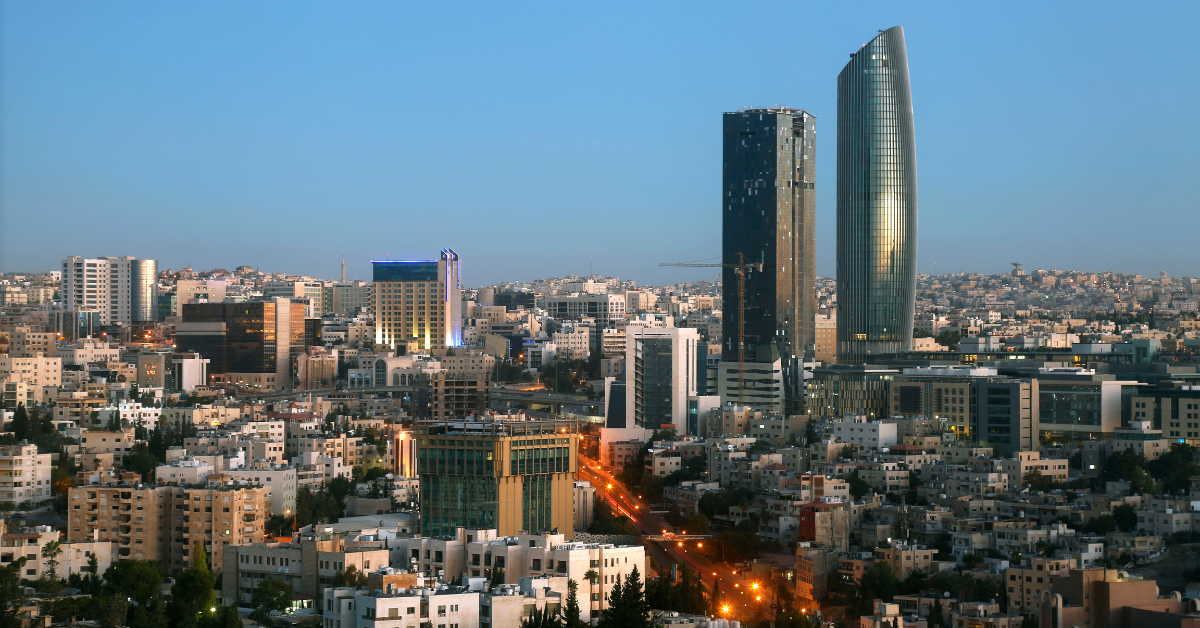Amman, the capital of Jordan, is a city that is expressed in Japanese only through katakana. Since it lacks a kanji form, its very name conveys a sense of foreignness, and for Japanese people, it resonates as a symbol of Middle Eastern identity. This article explores why Amman has no kanji representation and what impressions Japanese people associate with it.
Why Amman Cannot Be Written in Kanji
The city name Amman comes from the Arabic “عمان (Amman)” and is transcribed into Japanese in katakana. In Japanese, foreign place names are generally expressed phonetically in katakana, whether they originate from English or Arabic. Cities such as London, Cairo, and Doha are written the same way.
In the past, attempts were made to represent it in kanji, such as “亜曼,” based on its phonetic sound. However, such representations are now virtually unused, and newspapers or official documents exclusively use katakana. This differs from Chinese, which still uses phonetic characters like “安曼.”
Although the lack of kanji sometimes makes the name feel distant to Japanese speakers, it also makes it stand out as a uniquely exotic city name.
The Image Japanese People Have of Amman
For most Japanese, their perception of Amman is shaped through tourism and media exposure. Below is a summary of common impressions.
Japanese Perceptions of Amman
| Image | Specific details |
|---|---|
| Desert city | Dry climate and sandy landscapes typical of the Middle East |
| Historical ruins | Roman theaters and citadels |
| Center of Islamic culture | Atmosphere of mosques and traditional districts |
| Travel gateway | Starting point for Petra or the Dead Sea |
| Exotic character | Arabic script and distinctive cityscapes |
| Sports city | Host of international events such as soccer tournaments |
Thus, Amman is recognized by many Japanese as a city that embodies “Middle Eastern identity.”
The Tourist Appeal of Amman
Amman serves as the gateway for most Japanese tourists heading to Petra, the Dead Sea, and Wadi Rum.
Within the city itself, attractions include Roman theaters, the Citadel, and ancient ruins that allow visitors to experience history firsthand. The city also features vibrant souks (traditional markets), where spices and crafts create an atmosphere full of life.
In recent years, café culture and art scenes have added a modern appeal. Amman is therefore perceived not only as a transit hub but also as a city where tradition and modernity coexist.
Amman and Its Connection to Sports
Amman is also the hub of Jordanian sports life. The most popular is soccer, with national team matches drawing passionate crowds in its stadiums.
Popular Sports in Amman
| Sport | Characteristics | International role |
|---|---|---|
| Soccer | National pastime, stadiums full of energy | Hosts Asian Cup matches and qualifiers |
| Basketball | Popular among youth, strong domestic leagues | Venue for international tournaments |
| Taekwondo | Produced Olympic-level athletes | Consistent performance in global events |
| Track and field | Important in school education | Developed through regional competitions |
Amman is therefore regarded not only as a tourist destination but also as a city that nurtures sports culture and youth vitality.
Culture and Everyday Life in Amman
Beyond tourism and sports, Amman offers a variety of cultural experiences. Museums and theaters are scattered throughout the city, while modern art and film festivals highlight its dynamic creativity.
Cultural Experiences in Amman
| Field | Activities | What attracts Japanese visitors |
|---|---|---|
| Music | Arabic music performances and international festivals | Rhythmic, exotic sounds |
| Arts | Modern art galleries and museums | Exposure to Middle Eastern contemporary art |
| Film | International film festivals | Opportunity to understand Middle Eastern society |
| Food culture | Traditional dishes like hummus and mansaf | Unique flavors not found in Japan |
Thus, Amman functions as a place where visitors can immerse themselves in Middle Eastern culture.
Japan–Amman Relations
Japan and Jordan have long maintained friendly ties, with Amman as their central point of contact. The relationship extends across education, economics, and cultural exchange.
Examples of Japan–Amman Exchanges
| Field | Activities | Significance |
|---|---|---|
| Education | Accepting students, Japanese language teaching | Promotes mutual cultural understanding |
| Economy | Cooperation in infrastructure development | Strengthens regional growth and friendship |
| Sports | Coaching exchanges and joint tournaments | Deepens ties through shared activity |
| Tourism | Joint promotion projects | Encourages two-way tourism flows |
Amman is therefore not only a distant foreign city but also a hub of international exchange with Japan.
Conclusion
Amman is a city that cannot be written in kanji and is instead represented in Japanese as “アンマン” in katakana. This makes it feel uniquely foreign to Japanese people, evoking impressions of deserts, historical ruins, and Islamic culture.
It functions as a gateway to Petra and the Dead Sea while also gaining recognition as a sports hub through soccer and international tournaments. Moreover, it contributes to cultural exchange and collaboration with Japan in education, economy, and tourism.
Amman is more than just a national capital—it is a city that integrates tourism, sports, and cultural exchange, making it a significant Middle Eastern hub and a source of discovery for Japanese people.






